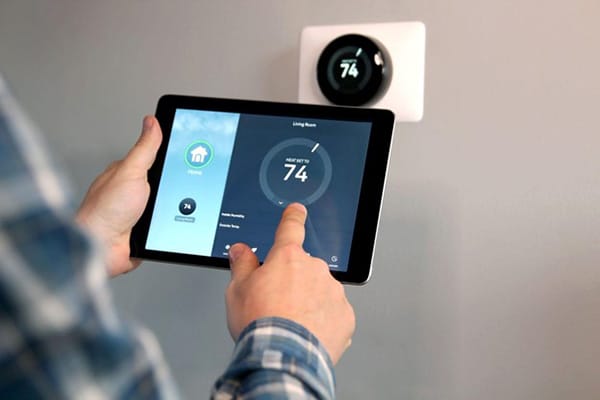Have you noticed a difference in your electricity bill lately? If so, you’re not alone. Millions of Americans are seeing their electricity rates rise in recent years, and with those increased electricity prices, their monthly electricity bills are growing.
Let’s take a look at why these electric prices are rising, and more importantly, what can be done about it. Because while higher electricity bills can be tough on household budgets, there are ways to bring them down to more reasonable levels, even as electricity prices rise.
Is the Price of Electricity Rising?
First things first: Let’s look at the numbers to see if electricity rates really are spiking, or if it’s just a matter of perception.
According to the U.S. Energy Information Administration (EIA), the average price of electricity for residential customers rose from 13.89 cents per kilowatt-hour in May 2021 to 14.92 cents per kilowatt-hour in May 2022.
That’s a price jump of 1.03 cents per kilowatt hour — an increase of more than 7%!
Importantly, it’s not only residential customers that are seeing the effects of rising electricity prices. According to the EIA’s data, the average price of electricity across all sectors (which includes residential customers, commercial customers, industrial customers, and transportation) jumped from 10.75 cents per kilowatt-hour in May 2021 to 12.09 cents per kilowatt-hour in May 2022.
That’s an increase of 1.34 cents per kilowatt hour, which is a whopping 12.5% increase in the average cost of electricity here in the United States in just one year.
Based on this data, we can definitively say that electricity prices are going up, and they’re rising quickly.
Who Pays the Highest Electricity Prices in the United States?
Thanks to the data provided by the Energy Information Administration (EIA), we know the average price residential customers pay for their electricity by state. We can compare that number to what they were paying at this time last year, and find out which states have seen residential electricity prices rise from 2021 to 2022.
During that time period, 42 states saw average residential electricity prices rise. Only Rhode Island, Nebraska, Idaho, Montana, New Mexico, Oregon, and the Dakotas saw prices fall, and in each case their prices dipped only slightly.
In the continental United States, the New England region pays, on average, higher prices for their electricity than other regions.
Out of the 48 states in the continental U.S., California had the highest average electricity rate for residential customers in May 2022. It also saw one of the highest price spikes from 2021 to 2022, with the average electricity price for households spiking a massive 18.8 percent.
But the state that pays the highest average electricity prices is, perhaps unsurprisingly, the Aloha State: Hawaii. In May 2022, Hawaiian households paid, on average, 43.11 cents for each kilowatt-hour (kWh) of electricity they used. That’s nearly three times the average U.S. residential rate!
What Causes Spikes in Electricity Prices?
Energy prices fluctuate up and down based primarily on two factors: supply and demand. Recent spikes in electricity prices can be explained on both the supply side and the demand side, so let’s take each one in turn.
Energy Supply Problems
The biggest issue on the electricity supply side has been the recent rise in the price of natural gas. In 2021, natural gas-fired power plants generated 38.3% of America’s electricity, the largest contribution from any single source.
But in 2022, Russia’s war in Ukraine sent the global price of natural gas skyrocketing. Russia is the world’s second largest producer of natural gas (behind the United States), and in peacetime it provides Europe with 40% of the continent’s natural gas.
But Russia’s invasion of Ukraine has disrupted these natural gas supplies, and Russian natural gas flows into Europe were less than one-third of their normal level in June 2022.
This disruption has increased natural gas prices not only in Europe, but also the rest of the world. Russia’s invasion has also increased the global price of coal — which generated 21.8% of American electricity in 2021.
Enter your ZIP Code and compare electricity rates
Electricity Demand Rises
America’s electricity usage tends to rise each and every year — it’s the backbone of our modern way of living. In fact, according to the Energy Information Administration, American electricity usage has increased from 1950 to 2021 in all but 11 years.
As more Americans experience the effects of climate change, our energy usage rises too, as we turn to our thermostats to stay comfortable. Our HVAC systems work harder these days to keep us cool in the summer and warm in the winter.
This increased energy usage means a rise in demand, which — if supply doesn’t rise with it — leads to higher electricity costs.
What Can We Do to Lower Our Electricity Bills?

We’ve now seen the data that shows how and why our electricity prices are growing, but that doesn’t mean our electricity bills necessarily have to rise with those costs.
There are a variety of steps we can take to lower our electricity bills, but let’s split these steps into two broad categories: shopping for our electricity and lowering our consumption.
First, let’s talk shop(ping).
Shopping For Electricity
Many Americans assume that they don’t have options for their electricity providers. For some this is true, but depending on where you live, the number of energy providers at your disposal could give you plenty of choices for your power.
If you live in a state with a deregulated energy market, then you likely have more than just your local municipal utility to choose from.
For example, 85% of Texas’s electricity market is deregulated, which means that if you live in the Lone Star State, you have a number of options for your power. You can, essentially, shop for your electricity.
For all of you Texans out there, you can get started on shopping for your electricity — and lowering that monthly electricity bill — by going to the website PowertoChoose.org. This website was set up by the Public Utility Commission of Texas, and it’s a non-biased resource that can help you compare providers, electricity rates, and electricity plans in your area.
You can learn more about your Power to Choose your electricity here.
Lowering Your Electricity Usage
If you live in a part of the country where you’re unable to shop for your electricity — or if you’ve already found the provider with the best plan and electricity prices in your area — then you’ll need to take a look at your energy usage if you want to lower your electricity bill.
One way to lower your household’s monthly electricity bill is to make your home more energy efficient. We use a lot of energy heating and cooling our homes, so it’s important to make sure we do that as efficiently as possible to keep our electricity usage (and therefore our electricity bills) down.
It’s important to weatherize a home in order to reduce energy loss and keep energy usage low. If you have any air leaks or drafts, you’ll want to fix those in order to make your home more energy efficient.
Consider investing in energy-efficient siding, which can be a great way to better insulate your home and reduce your electricity usage (and in turn, your monthly electricity costs).
Energy-saving thermostats can be a lifesaver when it comes to reducing the amount of electricity you use heating and cooling your home. Finding the right HVAC contractor to set your home up for energy-efficient success is another smart way to lower your heating and cooling energy use.
If you’re in the market for new appliances, keep an eye out for products with the ENERGY STAR certification. These products are certified by the U.S. Environmental Protection Agency (EPA) to operate at high levels of energy efficiency, and they can help lower your electricity consumption.
Finally, pay attention to the time of day you use and consume electricity in your home. If you have a tiered rate plan or a variable rate plan, your energy costs will depend on time-of-use.
If you’re blasting the air conditioning when everyone in your neighborhood is, then you’re consuming electricity during peak hours. This often means you’ll pay a premium for your electricity at this time of day, so consider adjusting your time-of-use for your more energy-intensive systems to off-peak hours.
Enter your ZIP Code and compare electricity rates
It’s Up to You to Start Saving
There’s so much in this world that’s out of our control. You’re not going to be able to bring electricity costs down by yourself, or lower the cost of natural gas or renewable energy single handedly.
But that doesn’t mean you’re helpless in the face of rising electricity prices. By shopping for electricity and getting smarter about how you and your family consume energy in your home, you can help reduce your monthly electricity bill.
All of these steps can save you money at any time — whether electricity prices are high or low. But these measures are especially important these days, as electricity prices continue to rise and put a strain on monthly budgets across the country.
It’s up to you then to start saving today. For more information about the ways you can start saving energy, along with a wide variety of FAQs on energy savings topics, be sure to check out the Energy Savings blog.
Brought to you by energysavings.com
All images licensed from Adobe Stock.
Featured image:


